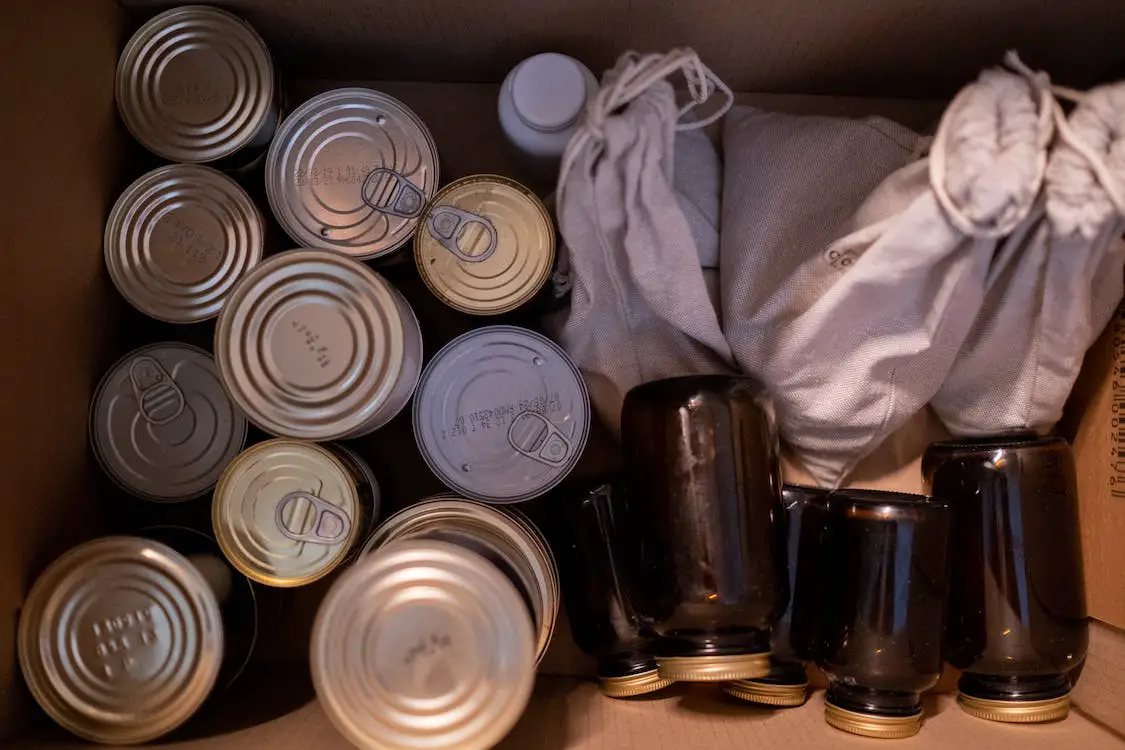We have already seen in recent years just how unstable the world can get in times of unprecedented natural disasters and pandemics. We don’t really have a way to stop them from happening, so it’s more of a “when” rather than an “if” aspect.
Being prepared for the worst might feel a bit depressing, but when things go south, people who bothered to prepare and stock up on life-saving supplies will be safe. Perhaps you already have a basic stock of food and essential supplies. However, learning how to organize and go about it the right way is important, which is what we are going to focus on in this article.
Some Basic Storage Guidelines
When it comes to storing food, you can’t go wrong with canned goods as they can be stored indefinitely as long as the integrity of the seal is not compromised. However, you probably want to consume the contents before the expiry period as taste and texture can degrade even if the food remains safe to eat.
For this reason, a lot of people prefer to follow the guidelines mentioned on the can and will consume the contents when it gets close to the expiry date and replace the can with a new one.
With regard to the environment, you want to avoid any exposure to sunlight and keep your food in a cool and dry place that also won’t be exposed to sudden temperature changes. Learning how to can food, a relatively simple process, might be one of the most useful homestead skills you can learn.
However, once you get the hang of it, you will need to learn how to properly organize your food, which brings us to our next point.
The Importance of Proper Labeling
Being able to read the contents of your stored items even after several years go by is crucial not only for food organization but for better safety. Of course, the first thing that you want to be labeling is the contents inside the can or package.
Next, you would label the manufactured date and estimated expiry. You would also need to include storage instructions in case a family member or someone else has to deal with the item.
The type of ink that you use to stamp the label also matters a lot.
Typically, your two best options are self-ink and pre-ink When stamping your labels for your cans or any other long-term preserved good, you want to keep in mind the self-ink vs pre-ink differences.
Self-inked stamps have a sort of integrated ink pad that is used each time you use the stamp. This removes the need to have a separate ink pad. Pre-inked stamps come out of the box with ink, already infused into the rubber die.
Generally, pre-inked stamps have ink that is evenly distributed across the die. This gives you a better quality impression than self-inking stamps.
Pre-inked stamps also use oil-based inks, which will last a good deal longer than self-ink stamps. This can make the former a good option for labeling long-term food and supply stores.
Finding a service that offers such stamping can be difficult, though. A lot of them seem to prefer dealing with businesses and companies, but there are some, like Rubber Stamp Champ, that have been around since the early 90s and made a name for themselves for being reputable and customer friendly.
Customer testimonials appreciate the level of quality of the stamps and the seamless experience in ordering online.
Finding good stamps is worth the investment if you are going to be packing and storing away a lot of things on your homestead.
How to Organize and Keep Things Simple
While it is all well and good to learn how to make foods and label them properly, if you are unable to organize the way you store them, things can get messy fast. Thankfully, there are a few ways to make things organized and easy to manage.
Create an Inventory:
The first thing you want to do when preparing and storing a greater-than-usual number of items over a long period of time is to make an inventory. Make columns for their names, quantity, date of purchase/manufacture, and any other useful information that you might want to know about the item.
Store Similar Items Together:
If you are storing a variety of foods, it can be a good idea to group items by similarity. For instance, all canned goods can be in one section, and all grains and legumes in another section. Spices and other ingredients would also have their own section, of course.
Keep Frequently Used Items Accessible:
For most people, the sensible option is not to lock away food and only touch it during emergencies. Instead, it is practical to access and use the products as and when their expiry dates come close.
This may require you to arrange the items in such a way that you have easy access to them and don’t have to dig deep into boxes or reach high-up spots to rotate them out.
At the end of the day, you want to create an experience that is convenient and helpful for you.


